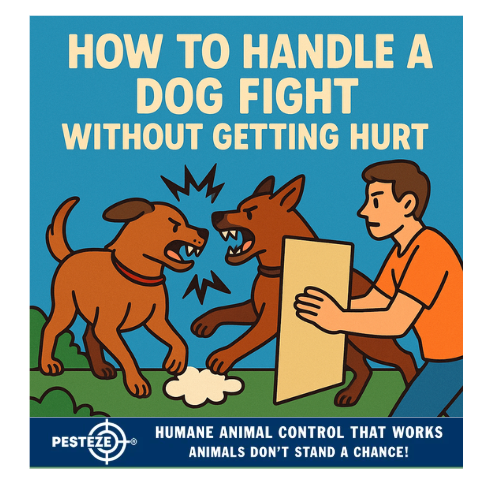HOW TO HANDLE A DOG FIGHT WITHOUT GETTING HURT

HOW TO HANDLE A DOG FIGHT WITHOUT GETTING HURT
SUMMARY
Dog fights can break out suddenly and are frightening to witness. Intervening incorrectly puts you at serious risk of injury. This guide explains safe, effective, and humane ways to break up a dog fight without getting hurt.
FEATURES
-
Stay calm and assess: Panicking makes the situation worse.
-
Avoid grabbing collars: Hands near mouths can result in bites.
-
Use loud noises: Clap, shout, or use an air horn to startle the dogs.
-
Employ barriers: Use a board, chair, or blanket to separate them.
-
Wheelbarrow technique: Safely pull dogs apart by their hind legs.
-
Prevent future fights: Training, supervision, and neutering reduce risks.
GUIDE DESCRIPTION
A dog fight can erupt in an instant, often catching owners off guard. While the instinct may be to dive in and pull the dogs apart, doing so recklessly can result in serious injury. Understanding safe methods to break up a dog fight will help you protect both the dogs and yourself.
The first step is to stay calm and assess. Yelling or panicking may only escalate the aggression. Take a deep breath and quickly decide on the safest approach to intervene.
Never grab collars or place your hands near the dogs’ mouths. In the chaos of a fight, even your own dog may bite reflexively. Many serious injuries occur when owners try to pull dogs apart by hand.
Instead, try to use loud noises to interrupt the fight. Clap your hands, shout firmly, bang objects together, or use an air horn if one is nearby. Sometimes this startles the dogs enough to break their focus on each other.
If noise doesn’t work, use physical barriers. Placing a chair, broom, or large object between the dogs can create separation. Throwing a blanket over them may also break their concentration long enough for you to safely separate them.
One of the safest hands-on methods is the wheelbarrow technique. If two adults are present, each should grab a dog by its hind legs (like a wheelbarrow) and lift them off the ground. Then, slowly walk backward, pulling the dogs apart while circling to keep them facing away from each other. This reduces the chance of redirecting aggression toward the handler.
Once separated, place the dogs in different secure areas to calm down. Do not allow them to immediately interact again, even if they seem relaxed.
To reduce future risks, focus on prevention. Socialize dogs from a young age, supervise interactions, and provide obedience training. Neutering may also help reduce aggressive tendencies in some dogs. If fights are frequent, consult a professional trainer or behaviorist for guidance.
- Saneeth Thota


Comments 0